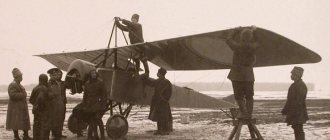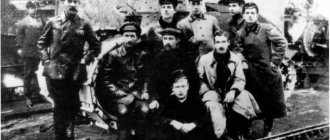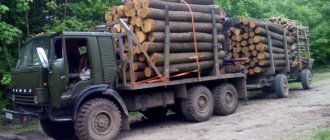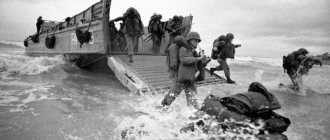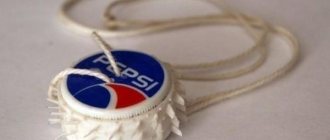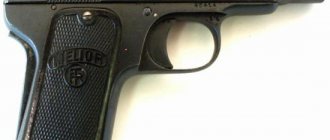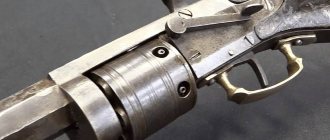In the 30s of the 20th century, heavy-duty aviation power units began to appear, developing more than 1000 hp. Aircraft designers began developing aircraft for these engines. The first aircraft began to appear in the mid-30s, they could be considered aircraft of a new generation, or “new wave”, as they were called at that time. The main features of these aircraft were monoplane-type gliders, enclosed cockpits and retractable landing gear.
A striking representative of this new wave among fighters was the famous, and well-known among us, Messerschmitt Bf.109. The first Messers were equipped with 720 hp engines. and had a maximum speed of 465 km/h at an altitude of 4000 km.
Development history
In parallel with the work in Germany, the development of new fighters began in other developed industrial countries, including France. This work began with a technical specification, which was prepared by the French Ministry of Aviation at the end of 1935.
For this task, a competition was held in France, in which six combat vehicles were entered at once:
- Bloch MB.150;
- Bleriot-SPAD S.710;
- Loire 250;
- Nieuport Ni.160;
- Dewoitine D.513;
- Morane-Saulnier MS.406.
Among these aircraft, two fighters, the Morand-Saulnier and Nieuport, became the winners of the competition. However, soon, due to constant accidents and breakdowns, a representative of the Nieuport company dropped out of the race. Thus, the winner of the competition was the Morane-Saulnier MS.406. True, the fighter prototype that participated in the competition was called MS.405.
The first car was equipped with a Hispano-Suiza 12Y engine with a power of 860 hp. With.
She made her first flight on August 8, 1935. Test pilot M. Detroya was at the helm of the car. In 1937, the vehicle was transferred to the troops for testing. In the same year, after a three-bladed propeller was installed on the fighter, it managed to reach a speed of 482 km/h.
In addition to good flight characteristics, the fighter was also very well armed. Its armament consisted of one 20 mm Hispano-Suiza HS-404 cannon and two 7.5 mm MAC 1934 machine guns.
By the beginning of 1938, 15 units of the installation series were made, which were sent for extended testing to the French Air Force. Another aircraft was also manufactured, which became the standard for a future large series of aircraft.
The first order for mass production was also placed in 1938 at the state-owned enterprise SNCAO in Nantes, and it consisted of 50 vehicles.
Following this, in the same year, an order was placed for another 80 vehicles. This was followed by a large order, which was placed at two factories, the above-mentioned SNCAO, and the Morane-Saulnier plant. They wanted to place an order at two more factories, but then they abandoned this idea.
The main reason that slowed down the production of fighter aircraft was the lack of power units. To solve this problem, the French even tried to organize the purchase of engines abroad (Hispano-Suiza 12Y engines were produced under license in many countries around the world, even in the USSR). However, it was not possible to achieve significant supplies from abroad.
From Czechoslovakia, before its occupation, 80 were supplied. The USSR refused to supply engines to France, and Switzerland, with which the same was agreed, did not manage to organize the production of engines before the defeat of France.
But be that as it may, over time, all the problems were eliminated, and production reached the planned volumes. The Morane-Saulnier MS 406 fighter was produced until March 1940. During the production period, 1098 MS 405 and MS 406 were produced. With these figures, to this day, this aircraft is the most popular French fighter.
Competition results...
On June 18, 1932, the Dewoitine D-500 prototype made its first flight in Toulouse under the control of pilot Marcel Doré. Over the next nine months, the remaining nine prototypes made their first flights. They took off in the following order: Nieuport-Delage NiD 122, Bernard 260, Loire 43, Mureaux 170, Wibault 313, SPAD 510, Morane-Saulnier MS.325, Gourdou-Leseurre 482 and finally, in early March 1933, Hanriot H-110.
The competition for the best fighter was accompanied by a heavy loss - on January 14, 1933, Loire 43 crashed. This was probably due to the illness of pilot Maurice Morin at high altitude.
Two other straight-gull wing aircraft, the Gourdou-Leseurre 482 and the Mureaux 170, were rejected due to insufficient forward visibility. Also rejected:
- Bernard 260 and Wibault 313 – for too low rate of climb;
- Nieuport-Delage Ni.D.122 – for the wing radiators being too vulnerable;
- Hanriot H-110 – for too low speed;
- Morane-Saulnier MS325 – was not presented to the technical service.
On November 23, 1933, the Dewoitine D-500 was declared the winner of the competition, which received the first production order of 45 copies. Subsequent contracts with the Air Force increased the order for the D-500 to 98 copies. Then an order was made for 250 D-501 fighters equipped with cannon motors and 12 Xcrs engines, and then another 98 aircraft with cannon motors and 860-horsepower 12 Ycrs engines.
The French Air Force also received 60 Blériot-SPAD 510 biplane fighters and the same number of Loire 46 C-1 monoplanes, which were equipped with a modified wing that improved visibility to the level of the Loire 43 and 45.
Exploitation
Before the war, in many countries of the world, in particular in the USSR, the introduction of new aircraft models into the troops was hampered by the difficulty of retraining pilots who were accustomed to flying old machines. There was no such problem with Moran. The French pilots mastered this fighter so easily that they did not even need to create training machines.
The aircraft had a low wing load, thanks to which it had very good horizontal maneuverability.
In addition, MS 406 had a low landing speed. However, the car also had significant drawbacks. It showed engine overheating. However, this was a design flaw. The fact is that in order to reach a speed of 450 km/h or more, it was necessary to retract the radiator into the fuselage, and this, in turn, led to overheating of the engine.
Among other design flaws identified during operation, the pilots noted the spontaneous release of the landing gear and radiator during aerobatic maneuvers. At high altitudes, machine guns froze, causing them to stop firing. The machine guns themselves were criticized for having insufficient ammunition due to being magazine fed. The planes did not have armored backs. However, this drawback was eliminated by the pilots themselves.
Assembly
The main thing in assembling the AZ Moran is not to follow the instructions




